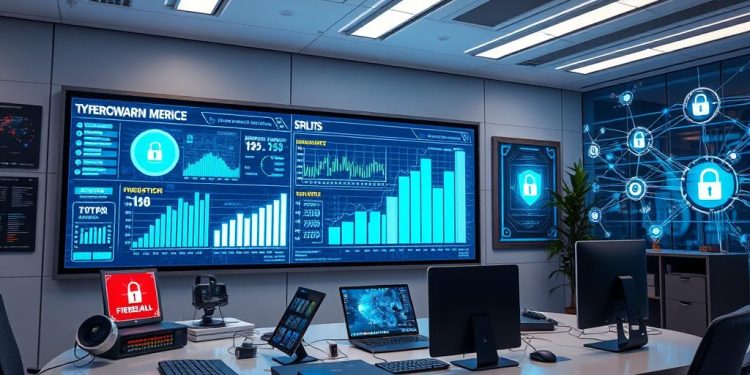In today’s digital landscape, software development has become more critical than ever. However, as software products grow in complexity, so do the cyber threats that challenge your work. It is vital for developers like you to understand and apply strong Security Best Practices throughout the software development lifecycle (SDLC). This article will guide you through ten essential strategies aimed at improving Software Development Security, safeguarding user data, and enhancing overall code integrity.
Statistics show that common security flaws, such as SQL injection and cross-site scripting, account for approximately 60% of web application vulnerabilities. By implementing practices like input validation, you can reduce unauthorized access incidents by up to 80%. Furthermore, the use of multi-factor authentication (MFA) can effectively prevent over 99% of automated attacks. The financial stakes are high; data breaches can cost companies an average of $3.86 million, which underscores the importance of adopting secure coding principles.
As you delve into this topic, remember that prioritizing security is not just a technical responsibility. It’s an essential aspect of your work that impacts your organization and its users. Let’s explore these best practices to bolster your coding efforts and ensure a secure development environment.
Understanding the Importance of Software Security
The significance of software security has grown immensely, as the digital landscape faces a rise in cyber threats. Developers need to equip themselves with knowledge that allows them to identify and mitigate vulnerabilities that could expose user data. Understanding how to protect against cyber threats is essential for maintaining the integrity and confidentiality of applications in today’s interconnected world.
What Are Cyber Threats?
Cyber threats refer to a variety of malicious activities aimed at exploiting weaknesses in software applications. These threats range from phishing attacks to sophisticated malware designed to compromise sensitive data. Statistics reveal that 80% of data breaches stem from compromised credentials, pointing to the urgent need for robust application security measures. In 2024, the average cost of a data breach soared to $4.88 million, emphasizing the financial stakes involved in software security.
Impact of Security Risks on Developers
Security risks can dramatically affect developers’ work. Organizations that neglect software security often face devastating consequences, including reputational damage and legal repercussions. A staggering 93% of organizations reported encountering some form of software vulnerability in their applications within the past year. Furthermore, studies indicate that 29% of companies have never conducted a security assessment of their applications, leaving gaps in awareness and preparedness against potential breaches.
Simply put, integrating software security practices from the outset can help mitigate risks. Companies that prioritize secure software development experience a 50% reduction in vulnerabilities compared to those that don’t. As cyberattacks continue to rise, understanding these threats will empower developers to create safer applications and protect critical resources effectively.
Common Security Risks in Software Development
As a developer, you encounter various security risks that can jeopardize your applications and user data. Addressing these issues early in the development process is essential. The following are some of the most prevalent risks that can expose software vulnerabilities and compromise security.
Lack of Active Software Maintenance
Failing to maintain software actively can lead to numerous security vulnerabilities. Applications become outdated without regular updates, making them susceptible to exploitation and allowing access to secure data and confidential information. Regularly updating your software is crucial for addressing known vulnerabilities and maintaining strong security defenses.
Poorly Written Code
Efficient code is vital for security. Poorly written code often results in inconsistent coding practices, which can significantly increase security risks. Inadequate code not only hampers readability but also lacks essential security measures. Streamlining your coding practices can enhance efficiency and contribute to a more secure application environment.
Insecure Password Storage
Insecure password storage presents a significant threat to security. Many developers fall into the trap of storing passwords in plain text or using outdated hashing algorithms like MD5 or SHA-1. Such practices facilitate unauthorized access to user accounts and sensitive information. Implementing modern, secure hashing methods is critical to safeguarding user credentials from potential attackers.
Implementing Security Best Practices
Integrating security best practices early in the development process is essential for minimizing vulnerabilities. By starting security initiatives at the planning stage, you can create a strong foundation for secure software development. This approach helps identify potential risks and lays out a strategy for addressing them as the project progresses.
Starting Security Practices at the Planning Stage
When you initiate a new project, incorporating security considerations right from the beginning can significantly enhance the overall security posture. Define your security requirements clearly, perform a risk assessment, and develop a threat model to understand potential vulnerabilities. Prioritize security best practices, ensuring they are an integral part of your development plan rather than an afterthought. This proactive mindset can lead to early detection of issues and better allocation of resources for necessary security measures.
Adopting the Secure Software Development Lifecycle (SSDLC)
The Secure Software Development Lifecycle (SSDLC) promotes the seamless integration of security at each phase of development. This includes planning, design, implementation, testing, and deployment. By adopting SSDLC, teams can conduct risk analysis early on, ensuring that security requirements are adequately addressed throughout the project. Security testing should not be reserved only for the final stages; rather, it should occur concurrently with development to identify and mitigate vulnerabilities promptly.
| Phase | SSDLC Focus | Key Security Practices |
|---|---|---|
| Planning | Risk Assessment | Identify threats, set security requirements |
| Design | Security Architecture | Threat modeling, define security controls |
| Implementation | Secure Coding | Follow secure coding guidelines, peer reviews |
| Testing | Security Testing | Conduct penetration testing, vulnerability assessments |
| Deployment | Ongoing Monitoring | Establish continuous security monitoring |
Adopting these practices allows for better management of security challenges throughout the software development lifecycle. Strengthening your approach ensures that vulnerabilities are identified and mitigated effectively, safeguarding your applications against potential threats.
Secure Coding Techniques for Developers
Mastering secure coding techniques is crucial in today’s software development landscape. By focusing on input validation, error handling, and adhering to coding guidelines, you can significantly reduce the risk of vulnerabilities in your applications.
Input Validation to Prevent Attacks
Input validation plays a fundamental role in ensuring that all incoming data conforms to expected formats and constraints. An alarming statistic reveals that over 80% of web application vulnerabilities result from improper input validation. Implementing robust input validation mechanisms can help safeguard your applications against attacks such as SQL injection and buffer overflow. Take the time to sanitize user inputs effectively to reduce the chances of exploitation.
Importance of Error Handling and Secure Storage
Proper error handling and secure storage practices are essential to protect sensitive information. Applications must avoid displaying detailed error messages that could expose vulnerabilities. Instead, you should log errors internally for troubleshooting while providing generic messages to users. Additionally, secure storage practices, including encryption, help protect sensitive data from unauthorized access. Organizations that implement effective error handling strategies can mitigate the risks of exposing critical system information.
Reading and Following Secure Coding Guidelines
Familiarizing yourself with secure coding guidelines is a vital step toward cultivating a security-first approach. Utilizing frameworks such as the OWASP Secure Coding Practices checklist will enhance your understanding of secure coding principles. This checklist covers 14 essential areas of focus throughout the software development lifecycle. Regularly reviewing and applying these guidelines can significantly improve your secure coding practices and ultimately strengthen the security of your applications.
Data Protection Strategies
In today’s digital landscape, robust data protection strategies are essential for safeguarding sensitive information. With the rise of cyber threats, especially considering that cybersecurity breaches have increased by 33% over the past three years, it’s vital to use effective security measures. The implementation of encryption, tight access controls, and securing data at rest and in transit plays an important role in protecting against unauthorized access and breaches.
Using Encryption for Sensitive Data
Encryption serves as a fundamental approach to enhancing data protection. Utilizing strong encryption methods for sensitive data storage can significantly reduce the risk of data breaches by up to 60%. This practice ensures that even if data is intercepted, unauthorized users cannot access it without the corresponding decryption key. Organizations should prioritize implementing encryption protocols for all sensitive information, especially in response to the average cost of a data breach, which has escalated to $3.86 million as of 2023.
Implementing Tight Access Controls
Establishing tight access controls ensures that only authorized individuals can access sensitive data. This involves employing techniques such as role-based access control (RBAC) and multifactor authentication (MFA) to enhance security. As statistics show, 43% of cyber-attacks specifically target small businesses that may lack adequate security measures. By enforcing strict access controls, businesses can greatly diminish their vulnerability to breaches and enhance overall security posture.
Securing Data at Rest and in Transit
Securing data both at rest and in transit is a vital aspect of effective data protection. Utilizing encryption for data in transit prevents interception during transmission, while data at rest encryption ensures that stored information remains protected. Furthermore, with increasing instances of mobile device attacks showing a 50% rise over the last two years, focusing on mobile security practices becomes essential. Regularly reviewing these security measures and adjusting them based on emerging threats can lead to improved data security outcomes.
Conducting Regular Security Audits
Regularly conducting security audits is critical in identifying vulnerabilities and enhancing the security of your applications. This process not only evaluates your existing security measures but also helps you stay compliant with various regulations. Engaging in routine security audits can prevent potential breaches, ultimately saving your organization from costly consequences.
Benefits of Code Reviews
Code reviews play a pivotal role in maintaining high security standards within software projects. They provide numerous benefits:
- Identifying security flaws early in the development process.
- Offering developers the chance to learn best practices and improve their coding skills.
- Creating an opportunity for team collaboration, fostering better communication between team members.
Organizations that prioritize code reviews often find they are 50% more likely to catch vulnerabilities before deployment, thereby ensuring a secure final product.
Utilizing Static Code Analysis Tools
Implementing static code analysis tools can significantly enhance your security audits. These automated systems help scrutinize code for vulnerabilities prior to deployment. The advantages include:
- Detecting potential security weaknesses that may be overlooked during manual reviews.
- Offering consistent results and improving the accuracy of vulnerability detection.
- Bridging knowledge gaps, especially in larger teams where information continuity is vital.
Incorporating these tools leads to a more robust security posture, as organizations are better equipped to handle evolving threats and maintain compliance with industry standards.
| Benefit | Impact on Security |
|---|---|
| Regular Security Audits | Identify vulnerabilities proactively, reducing risk of breaches |
| Code Reviews | Enhance coding quality and team collaboration |
| Static Code Analysis | Automate vulnerability detection, ensuring consistent results |
Emphasizing Team Training and Awareness
Fostering a security-driven culture within development teams requires a strong emphasis on team training and security awareness. Regularly scheduled training sessions provide developers with the knowledge to recognize potential threats and cultivate best practices. It’s vital that this training does not stand alone but is integrated into the overall development process.
The Role of Security Awareness Training
Security awareness training plays a fundamental role in equipping your team with the necessary skills to identify and mitigate risks. As 70% of data breaches involve human elements, the impact of effective training becomes clear. By implementing regular training sessions that incorporate both theoretical knowledge and practical scenarios, you can significantly enhance your team’s readiness against cyber threats.
Encouraging Collaboration between Developers and Security Teams
Collaboration between developers and security teams is crucial for establishing a cohesive security environment. When security is viewed as a shared responsibility, communication improves, leading to timely identification of vulnerabilities. Regular meetings and discussions on security topics should be ingrained in project workflows. This type of collaboration not only reinforces the importance of security awareness but also fosters a supportive atmosphere where all team members actively contribute to securing the development lifecycle.
| Training Method | Description | Benefits |
|---|---|---|
| Scenario-Based Learning | Training that simulates real-world threats specific to your environment. | Enhances retention; prepares teams for actual incidents. |
| Regular Drills | Frequent simulations that test team response to security breaches. | Improves preparedness; identifies gaps in procedures. |
| Collaborative Workshops | Interactive sessions between developers and security personnel. | Encourages knowledge sharing; builds stronger partnerships. |
| Continuous Training Programs | Ongoing online resources and updates for team members. | Keeps teams informed; fosters a proactive security culture. |
Conclusion
In the fast-paced world of software development, putting a premium on security is essential. By integrating the essential security practices highlighted, you can build robust applications that effectively shield user data while complying with prevailing laws and regulations. The dynamic nature of cyber threats means that strategies for secure software development must likewise evolve, ensuring that potential vulnerabilities are mitigated throughout the application lifecycle.
Regular risk assessments and reviews of access privileges not only safeguard your organization’s sensitive data but also contribute to a culture of security awareness among your team. Engaging in cybersecurity awareness training annually equips all personnel to identify potential attack vectors, reinforcing their role in maintaining security. Implementing multi-factor authentication adds another layer of defense, fostering trust among users and stakeholders alike.
Ultimately, adopting these software development best practices enhances not just the security posture of your applications, but also fortifies the reputation of your organization in today’s digital landscape. Embrace these principles today to ensure a secure, resilient, and trustworthy environment for your users.










